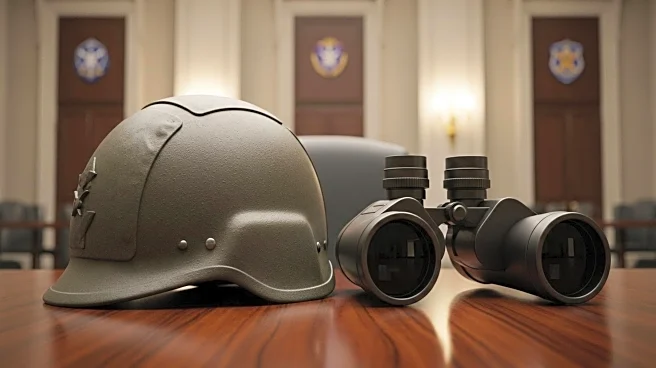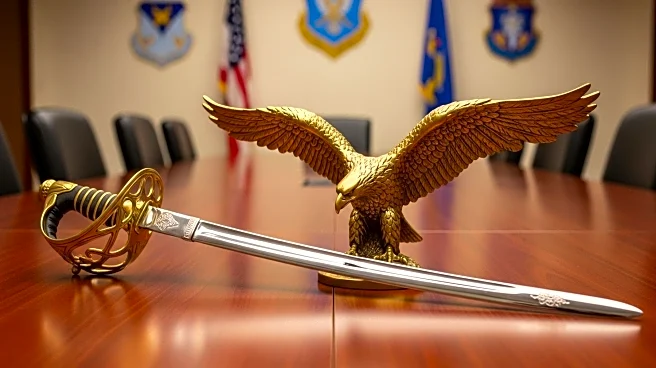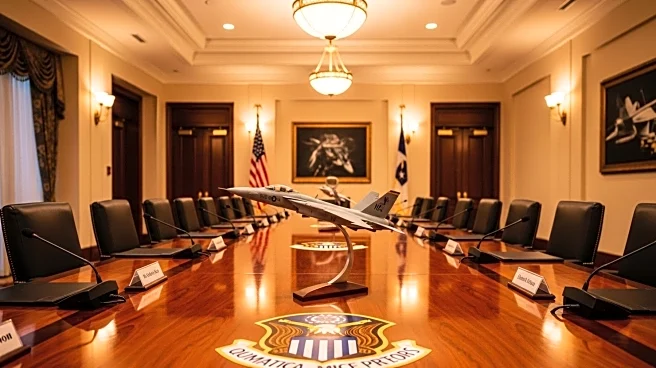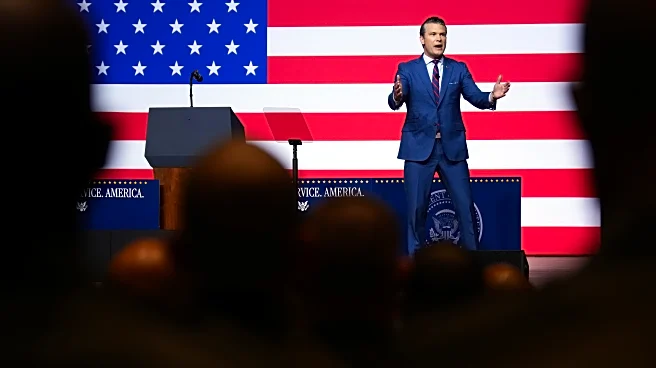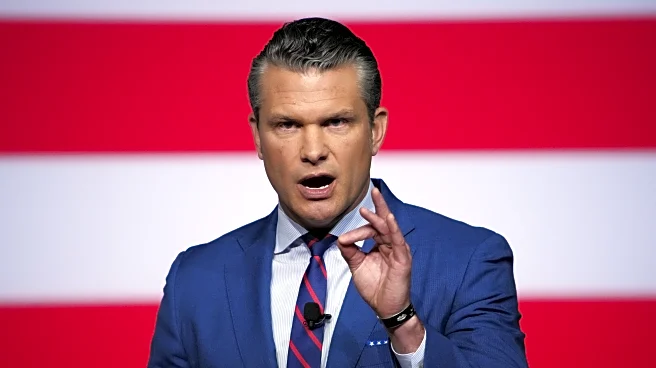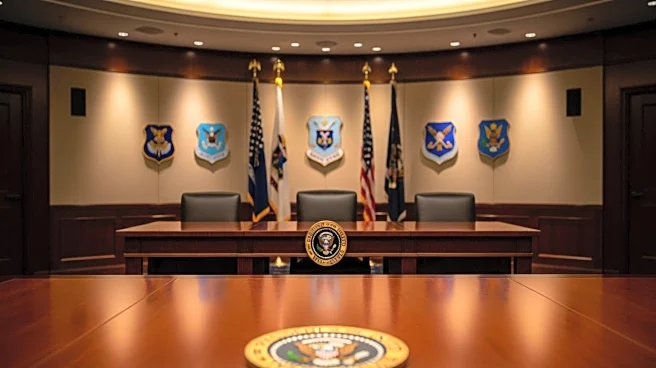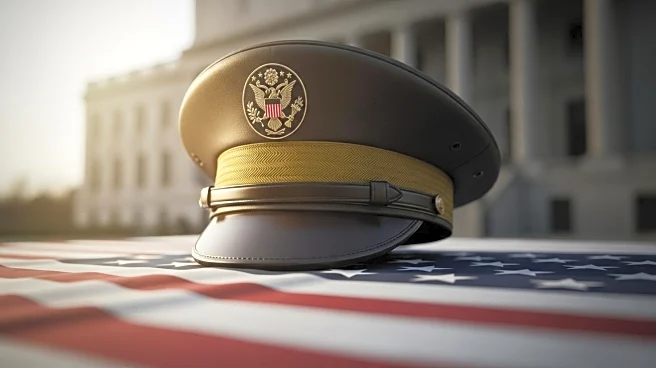What's Happening?
Hundreds of U.S. generals and admirals convened at the Marine Corps Museum in Quantico, Virginia, following a summons from Defense Secretary Pete Hegseth. The meeting, which included military leaders from around the globe, was called to introduce ten new directives aimed at reshaping military standards. These directives focus on physical fitness, grooming, and a return to 'the highest male standard' for combat roles. President Trump addressed the assembled military leaders, underscoring the importance of these changes. The gathering was reported by the BBC's Bernd Debusmann, who provided insights into the proceedings.
Why It's Important?
The introduction of these new military directives signifies a significant shift in the U.S. military's operational and cultural standards. By emphasizing physical fitness and grooming, the directives aim to enhance combat readiness and discipline. The return to 'the highest male standard' for combat positions may spark discussions on gender roles within the military, potentially affecting recruitment and training policies. These changes could impact military effectiveness and morale, influencing the broader defense strategy of the United States. Stakeholders, including military personnel and policymakers, will need to navigate the implications of these directives on military culture and operational efficiency.
What's Next?
The implementation of these directives will likely involve adjustments in training programs and evaluation criteria across the military branches. Military leaders and personnel will need to adapt to the new standards, which may require additional resources and support. The directives could prompt reactions from advocacy groups and policymakers, particularly concerning gender equality and inclusivity in the military. Ongoing assessments will be necessary to evaluate the impact of these changes on military performance and cohesion.
Beyond the Headlines
The emphasis on traditional standards may reflect broader cultural and political trends within the current administration. This move could influence public perception of the military and its alignment with national values. The directives may also affect international relations, as allies and adversaries observe changes in U.S. military policy and readiness.

